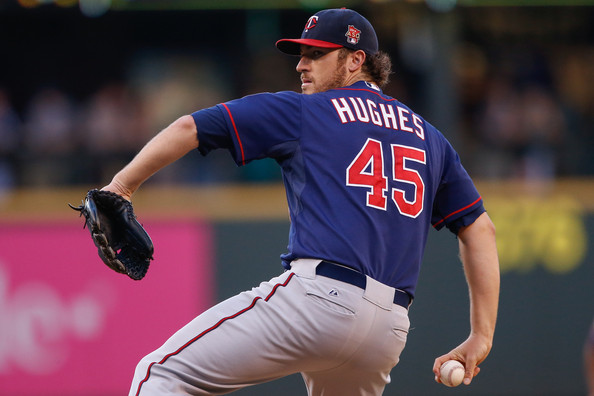General manager Terry Ryan and the Minnesota Twins extended starting pitcher Phil Hughes through 2019, effectively making his contract a five-year, $58 million deal. He will earn $9.2 million in 2015 and 2016 before earning $13.2MM annually from 2017 to 2019. Considering his 2014 numbers, the $11.6 million per year average salary is pretty team-friendly.
If you consider the Twins’ recent signing of veteran starter Ervin Santana, the extension looks even better. Ryan cut a check to Santana for $55 million over four years. That’s a reasonable price to pay for a proven, middle-of-the-rotation starter. But that’s roughly $2 million more per year for a guy whose numbers weren’t in Hughes’ ballpark. Santana’s 3.39 Fielding Independent Pitching (FIP), or Earned Run Average independent of the fielding behind him, indicates he was better than his 3.95 ERA indicated in 2014. But Santana wasn’t nearly as good as Hughes, and not many pitchers were or have ever been in certain aspects of the game.
Phil Hughes, The K:BB King
In 2014, Hughes had the best strikeout-to-walk ratio in baseball history. He struck out 11.63 batters per walk allowed. That’s less than one free pass allowed per game. He allowed as many homers (16) as walks. His 3.52 ERA was inflated due to terrible outfield and below-average infield defense. In fact, Hughes’ analytics make him look like a baseball god.
His FIP (2.65), xFIP (3.18) and SIERA (3.17) all indicate Hughes was a lot better than his ERA. He finished seventh in the 2014 Cy Young voting. However, most wouldn’t consider Hughes an ace, despite finishing tied for fourth among all pitchers with 6.1 Wins Above Replacement (WAR) last season. The two guys he tied, David Price and Jon Lester, will both make more than Hughes next season. Price made $14 million in arbitration last year, and Lester signed a monstrous six-year deal worth nearly $26 million per year on average.
Subjective Analysis
Hughes’ extension includes a limited no-trade clause that allows him to block trades to three teams each year. So if Hughes can repeat his ace-like 2014 season, Terry Ryan will have an excellent trade chip with a team-friendly contract. If Hughes gets hurt or takes a step back, the deal doesn’t look as good. But given his strategy of limiting free passes and forcing harmless fly balls in big Target Field, he should be fine if healthy. He’s certainly a new man in Minnesota.
I mostly like the deal, except I would have waited until after the 2015 season to offer it. Hughes was set to make just $8 million next year, but the difference between $8 million and $9.2 million or even $11.6 million is negligible unless he can’t play. But he might perform even better in 2015 and price himself out of Minnesota, so Terry Ryan didn’t fail too terribly this time.
Hughes and Santana will lead the young Twins into the future, and if they’re still around when Byron Buxton roams center field, their numbers will look even better. Let’s just hope Ryan doesn’t fail to trade either when they’re most valuable.



